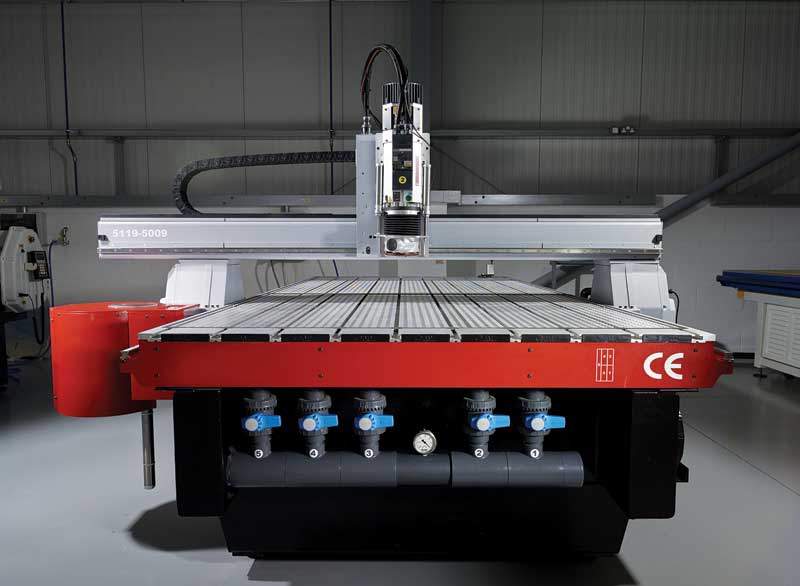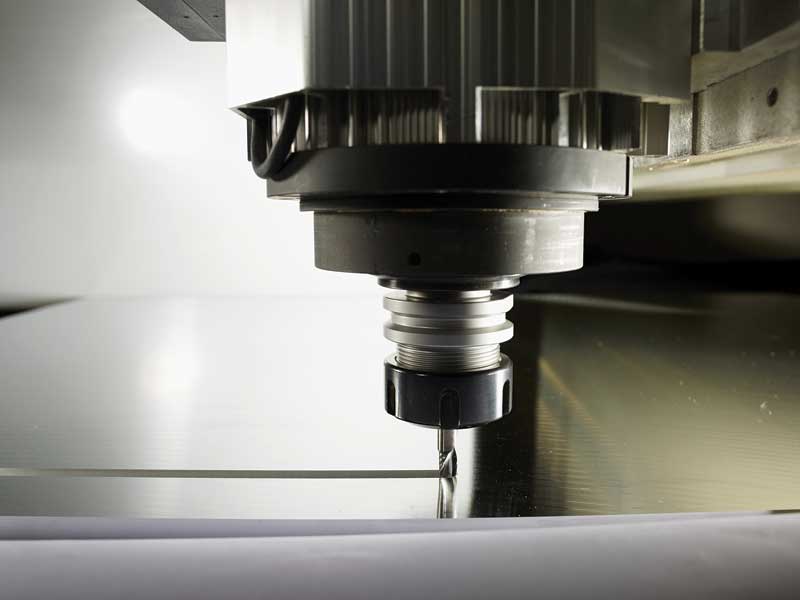
The choice between a heavy-duty router designed for demanding jobs and a versatile model intended for more typical sign finishing applications will depend on the sign shop’s particular needs.
The ‘wild card’ of outsourcing
For such partnerships to succeed, the supplier must understand the complex challenges encountered by the sign shop, regardless of its size. The foundation of this understanding will be a strong familiarity both with the shop’s processes and with how it controls those processes.
The loss of process control, on the other hand, is common when cutting is outsourced to a third party, rather than handled in-house. In such scenarios, the sign shop has no choice but to wait until its projects are completed by other companies.
Indeed, in terms of the costs of relying on an outsourced router, money is certainly an issue, but timing is a bigger one. The wait may not be to the liking of the signmaker or, for that matter, the customer, who could be understandably anxious about the potential lost revenue for every day by which the completion of an advertising sign is delayed. Sign shops can encounter difficulties when they promise and schedule projects for customers but someone else is doing the finishing work for them. In this respect, relying on others is something of a ‘wild card.’
To address this issue as part of their strategic decision-making, signmakers should require CNC vendors to help develop a cost analysis, comparing the purchase of a router for in-house use with the outsourcing of such work to another business.
With outsourcing, for example, the figures are fairly standard across Canada, with the costs of third-party machine time ranging from $70 to $110 per hour. Assuming an average use of five hours per week, a sign shop could therefore end up paying more than $27,000 per year for someone else’s cutting work. Such statistics need to be weighed against the upfront investment in and running costs of an in-house CNC router.
The vendor should be able to provide all of the necessary information for this analysis. Hence the need to go beyond a limited focus on the router’s selling price. Rather, the signmaker should ask for referrals from the supplier, visit facilities where its equipment is in active use and check reviews of product performance. A comprehensive presentation of facts is key to enabling thoughtful and prescient economic decision-making.

Some shops need a router that can machine solid aluminum.
An ongoing partnership
Most buyers and sellers of signmaking equipment recognize the need for training during installation, but what separates a vendor from a business partner is the latter’s acknowledgment that training needs to continue well after the installation. This is for two reasons: process change and turnover.
Every sign shop experiences staff turnover, so the owner needs to be reassured training can be provided for new employees as they join the business. In-house process change, meanwhile, can be especially challenging without ongoing training relating to the equipment used in said processes. Change does not have to be disruptive or detrimental to a sign shop’s operations, so long as the right training protocols are in place.
As mentioned, technical support is always a major concern, especially with respect to ongoing maintenance of the equipment. Given how time is always of the essence, remote diagnostics should be in place in case any problems arise.
The quality of support offered will depend on experience. Signmakers should review vendors’ service records, expertise and reliability as part of their ‘due diligence’ research prior to purchase.
Such support should not end after initial training and installation. A shop’s goals may change in a few years’ time, at which point upgrades or additional training protocols may become necessary. It is important to plan ahead for such eventualities.
Close business partnerships between supplier and sign shop are integral to the success of both. The relationship should start with a review of the processes and materials the shop plans to use to create graphics for its customers. Then, based on the information collected, the supplier should produce a purchase analysis demonstrating its understanding of both the shop’s goals and its challenges. While the quality of CNC equipment is certainly important, in the end a router is nothing more than a tool for helping a sign shop do what it does best, which is where both parties’ focus should be.
The availability of the supplier-as-partner can take many forms, not all of which require an in-person presence. Making spare parts available as needed, for example, is a worthy program, as are the aforementioned remote diagnostics and, for that matter, ongoing upgrades. Given the rapid developments of new capabilities in CNC technology, it would certainly be unrealistic to buy a router and assume no process- or operation-related revisions will ever be necessary.
It is incumbent upon suppliers to provide navigational guidance to help sign shops weather future changes in the industry. That, ultimately, is the point of working with a CNC system partner from start to finish.
Todd Hamilton is a technical sales executive for Axyz International, which develops and manufactures CNC routers and knife systems in Burlington, Ont. For more information, visit www.axyz.com.





